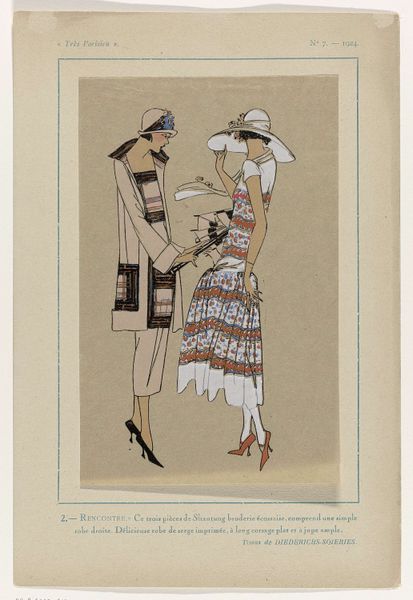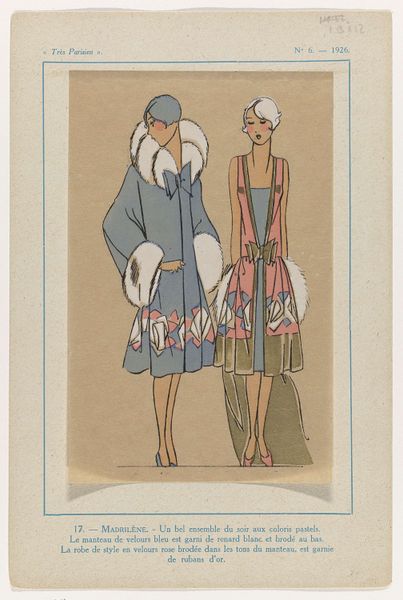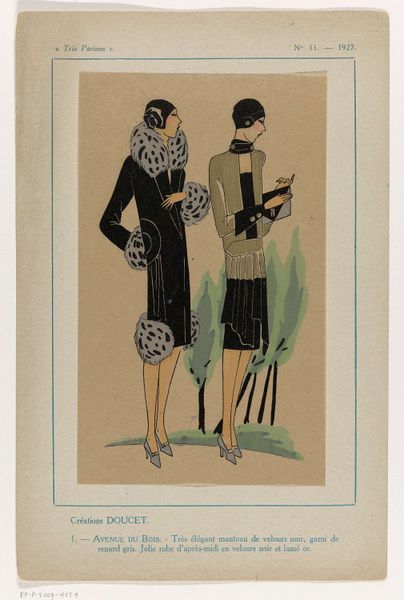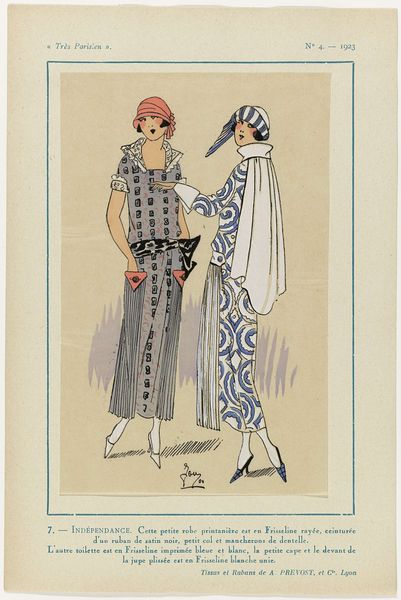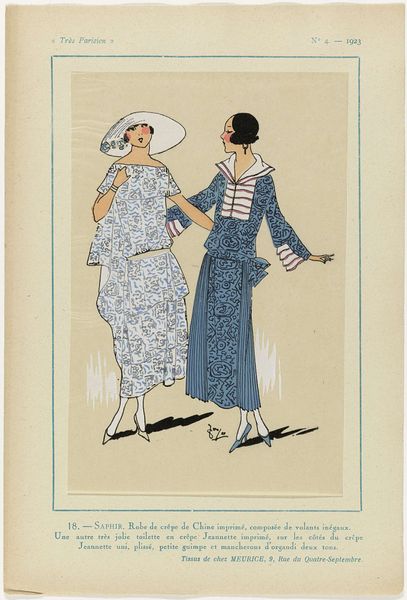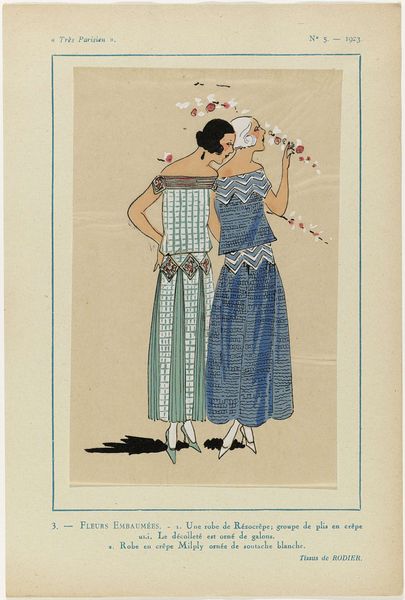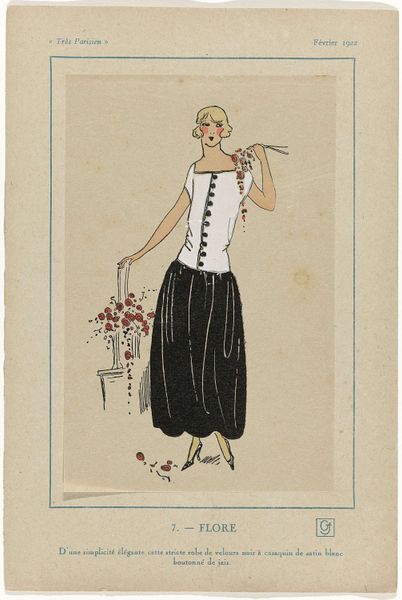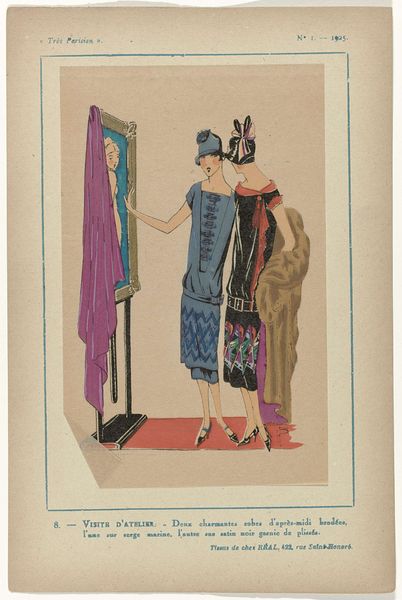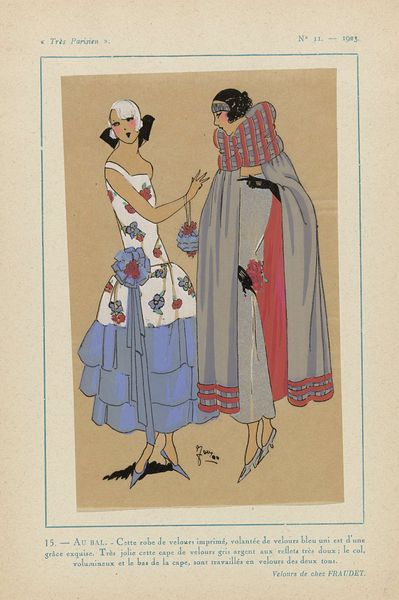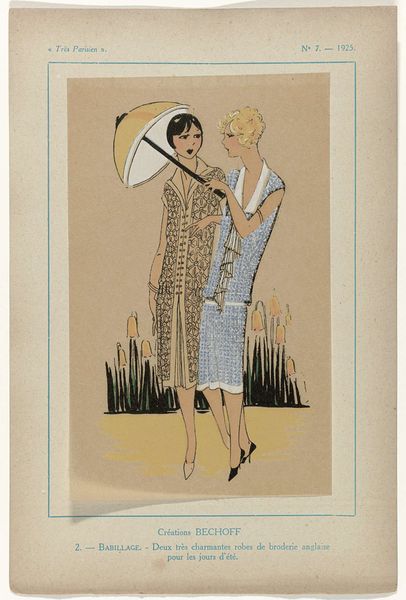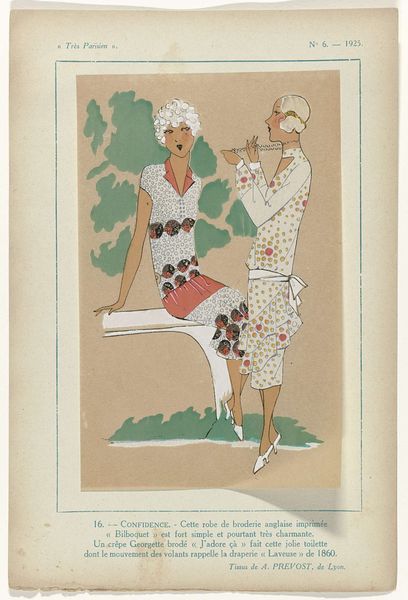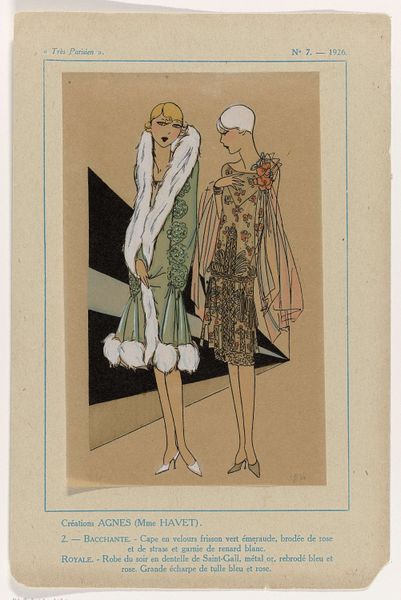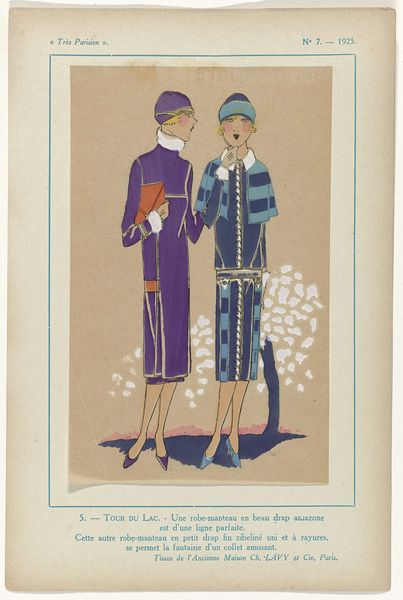
watercolor
#
portrait
#
art-deco
#
traditional media
#
caricature
#
retro 'vintage design
#
figuration
#
watercolor
#
historical fashion
#
watercolour illustration
Dimensions: height 195 mm, width 120 mm, mm
Copyright: Rijks Museum: Open Domain
Editor: Here we have G-P. Joumard's "Tr\u00e8s Parisien, 1925, No. 11, Pl. 18 - IL NEIGE" from 1925, a watercolour piece. It has this really lovely, elegant, almost frozen quality to it. What stands out to you in terms of its cultural context? Curator: Well, given the title translates to “It’s Snowing,” the setting becomes important. The work emerges from a post-World War I context, a time of tremendous social change and a flourishing of new styles like Art Deco. We can see it here in the flattened perspective and emphasis on line and pattern. It was a visual language of modernity, one embraced by the fashion industry, which itself played a key role in shaping perceptions of the ‘New Woman.’ Editor: The fashion aspect definitely pops. These flapper-era dresses are so iconic. How do you think the artist uses clothing to make a statement about Parisian culture? Curator: Precisely. Think about the deliberate contrast. One woman faces us; her outfit almost a uniform of modern freedom with bobbed hair, showing how she engages with society directly. The other, mostly turned away, focuses our attention on the lavish coat and collar; perhaps representing a more traditional element of society or wealth. It is not necessarily contradictory as the image also depicts modernity. The use of watercolour also speaks to its intended role – most likely, to be consumed quickly within a fashion magazine. Editor: That is really insightful, and it’s a detail I missed on the first pass. Curator: These images often had more ephemeral intentions – communicating style as part of a larger commercial machinery. It invites questions about art's place in consumer culture, then and now. Editor: It’s fascinating how much a seemingly simple fashion plate can reveal about its era's values. It makes you wonder about its wider socio-political place too. Thanks so much for sharing your insights. Curator: It has also opened up questions for me! Looking at this piece more closely has allowed me to consider the art’s agency and public purpose during a period of rapid transformation.
Comments
No comments
Be the first to comment and join the conversation on the ultimate creative platform.
